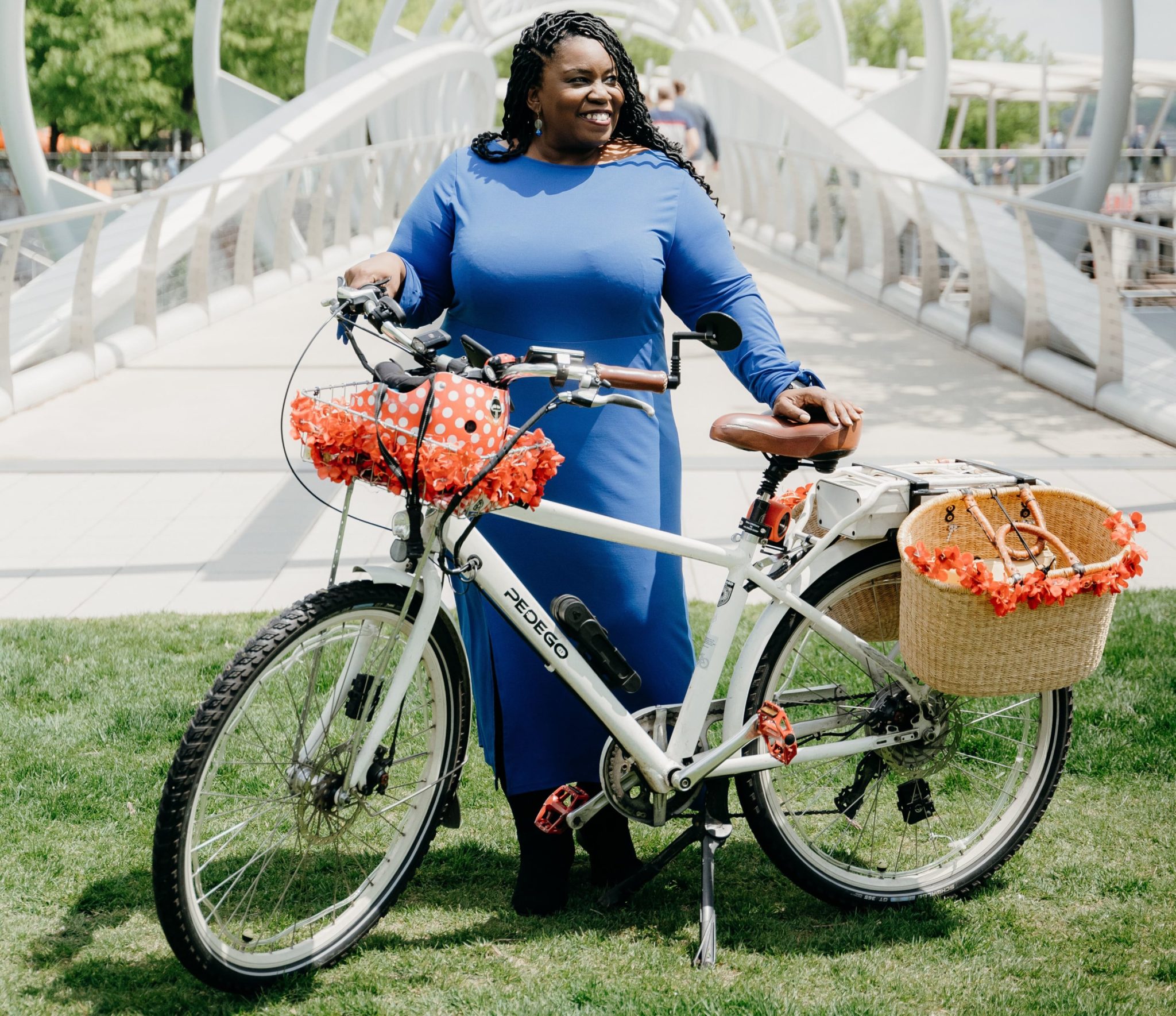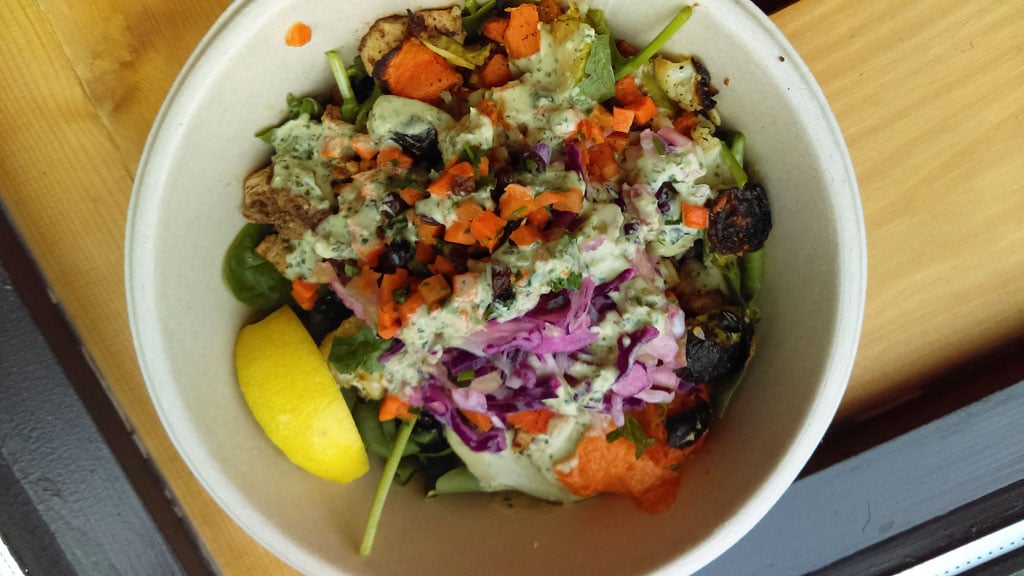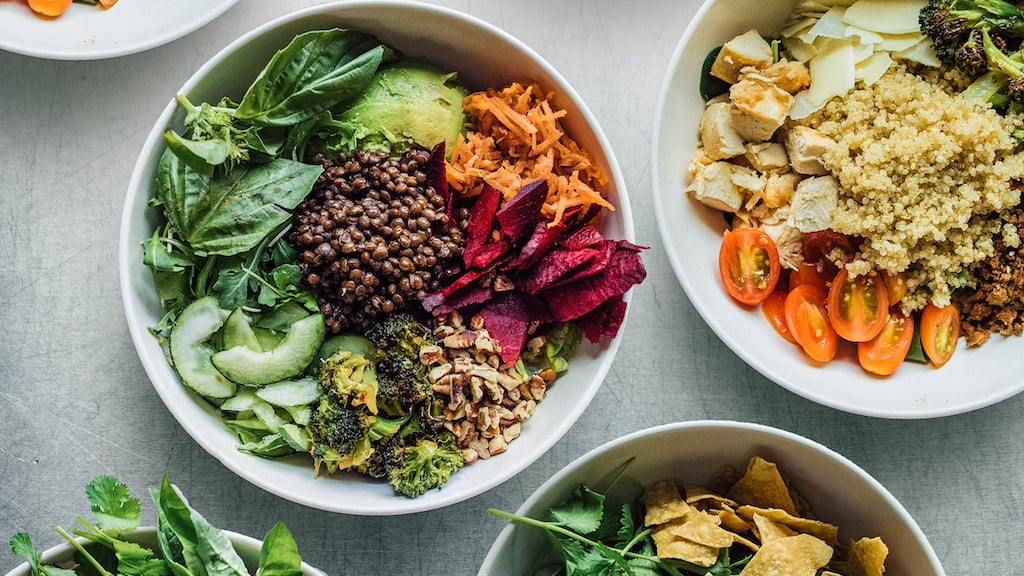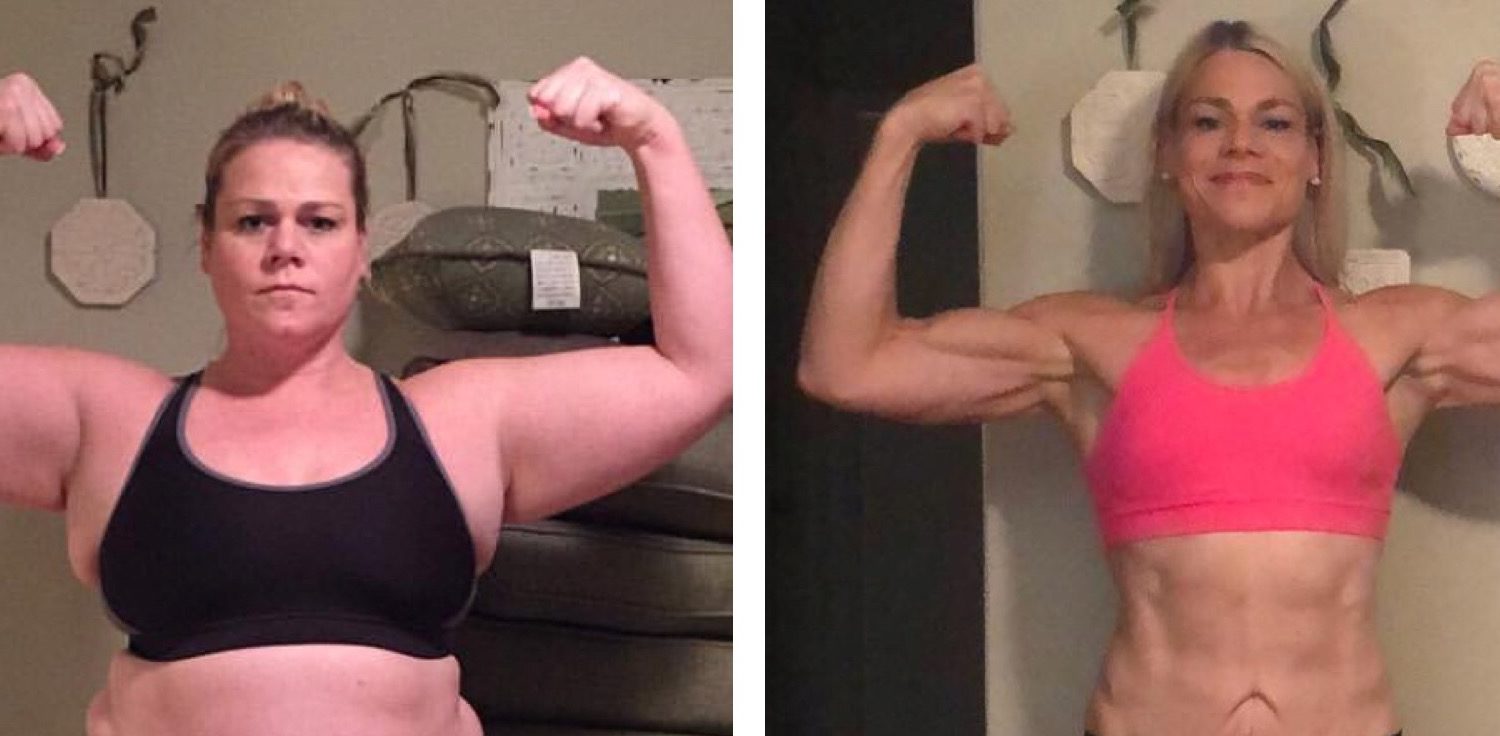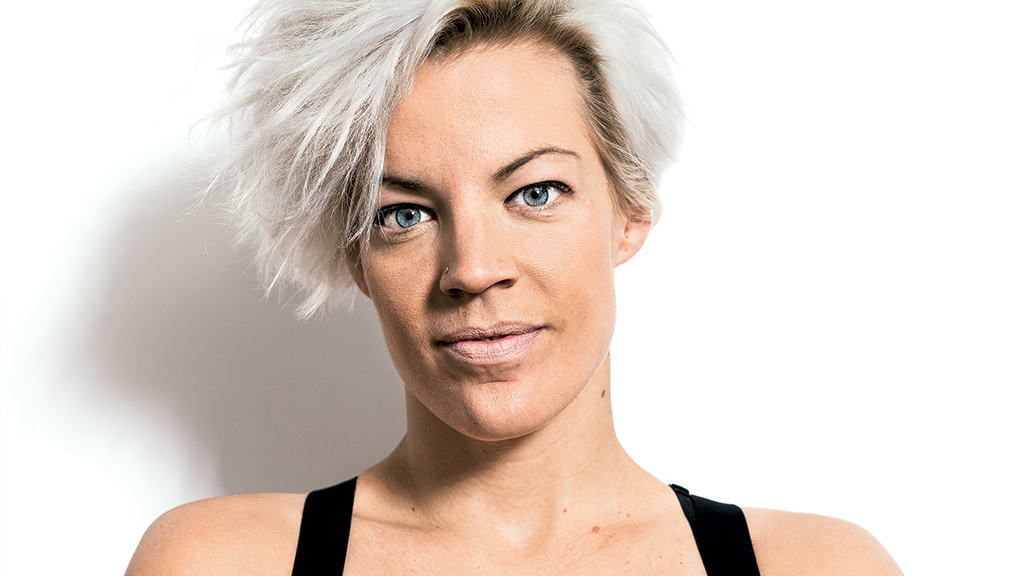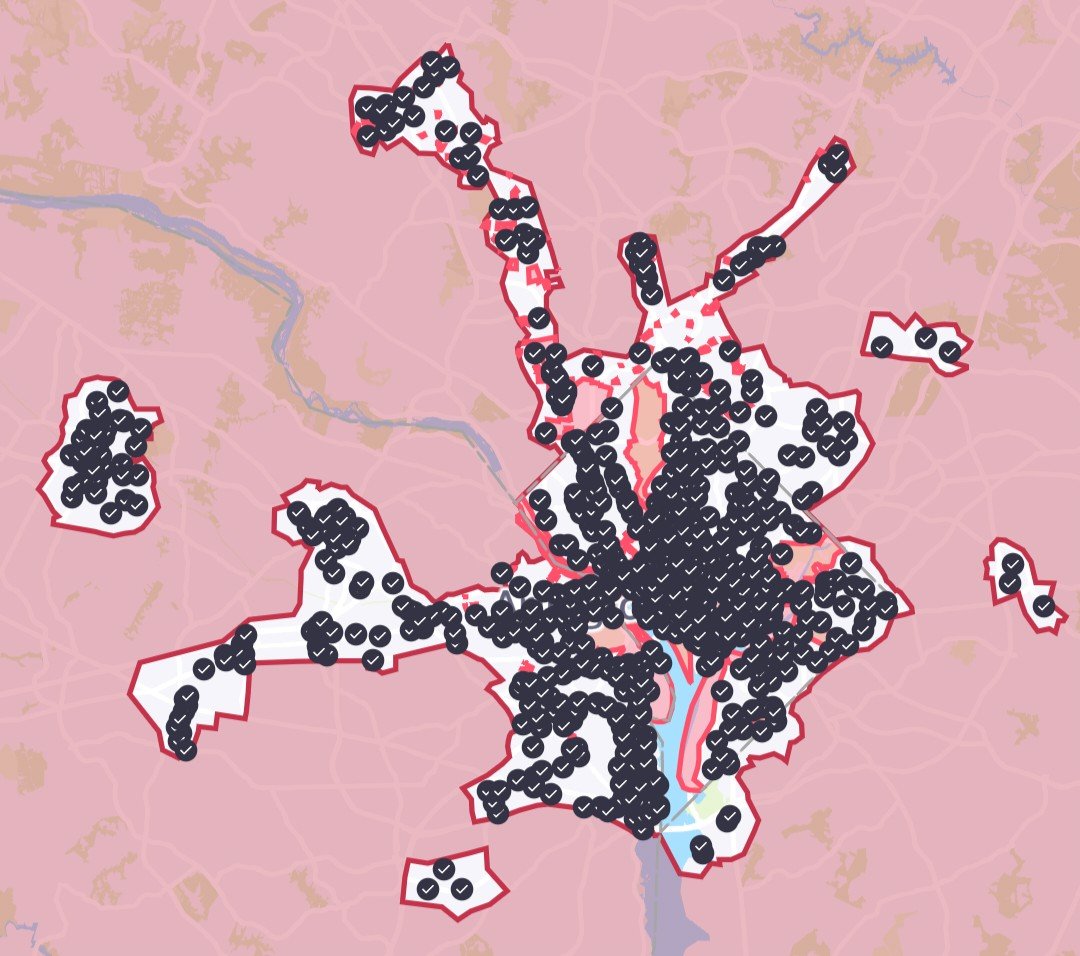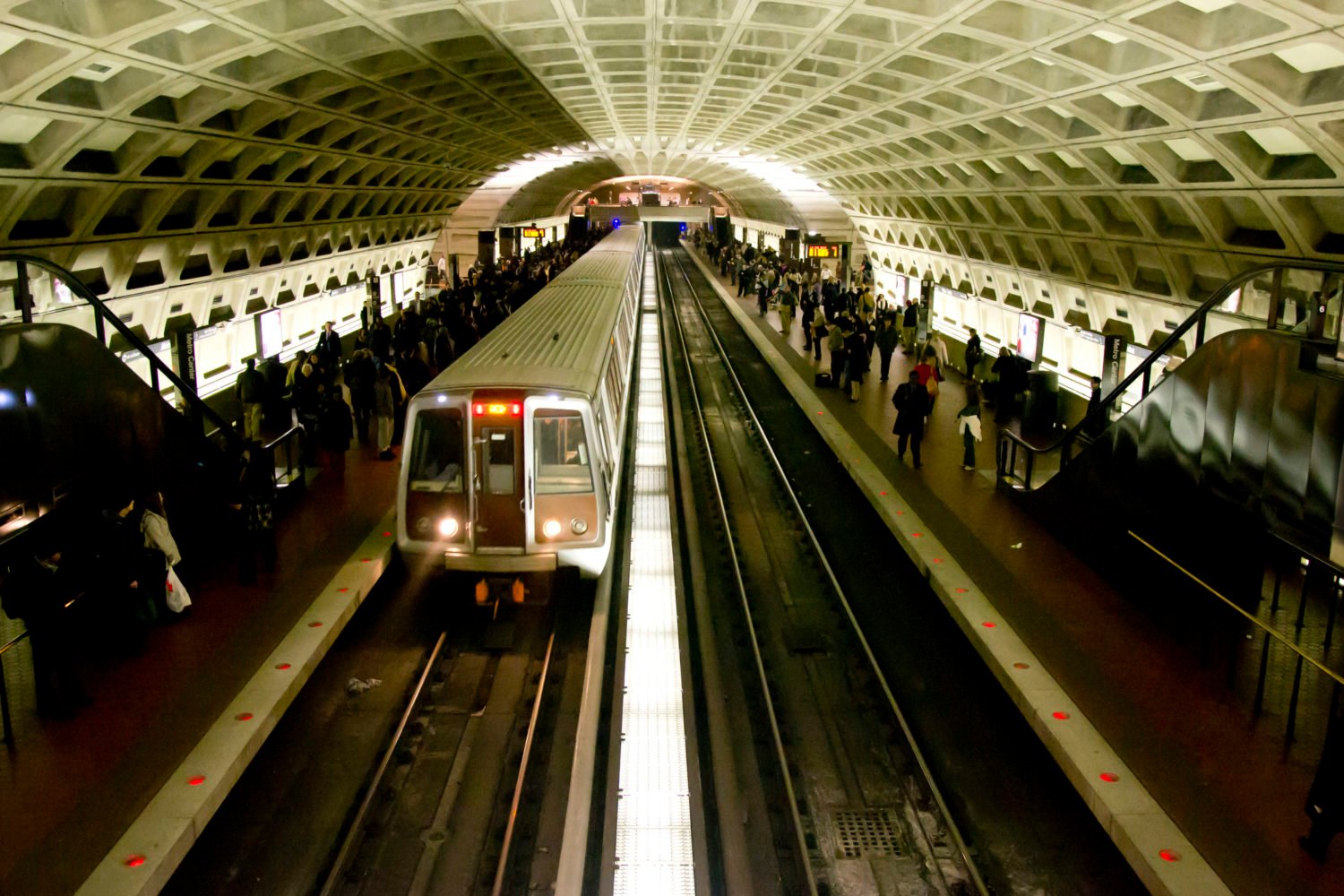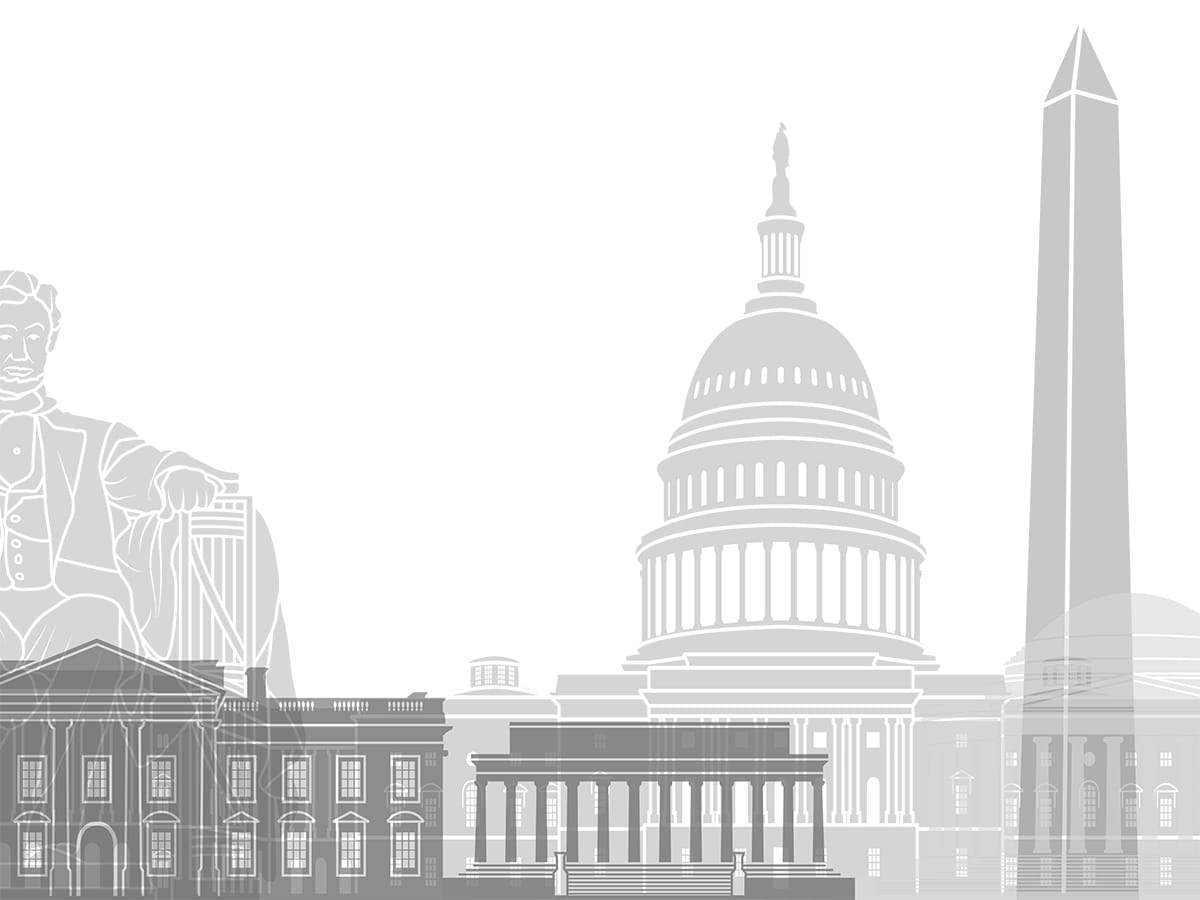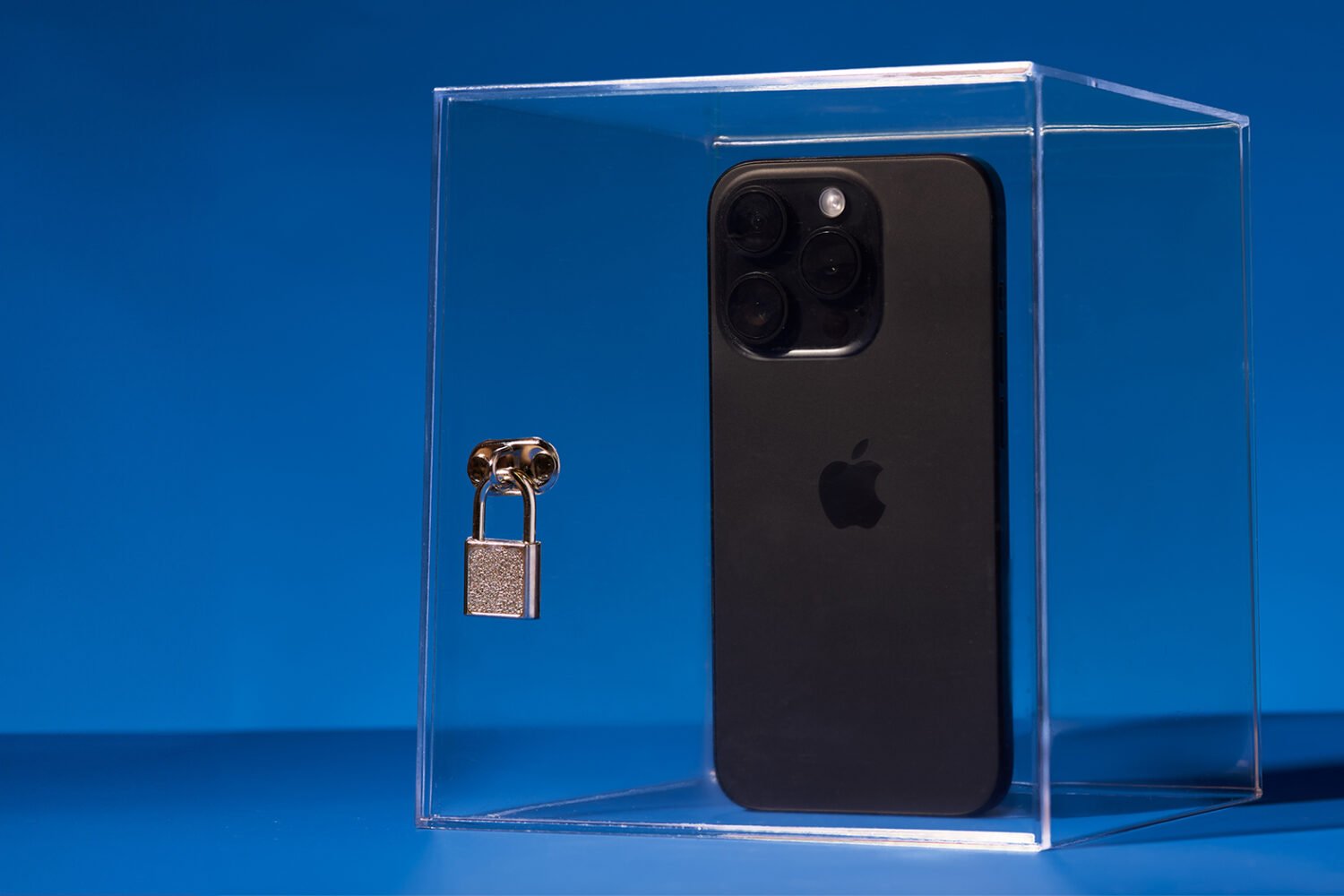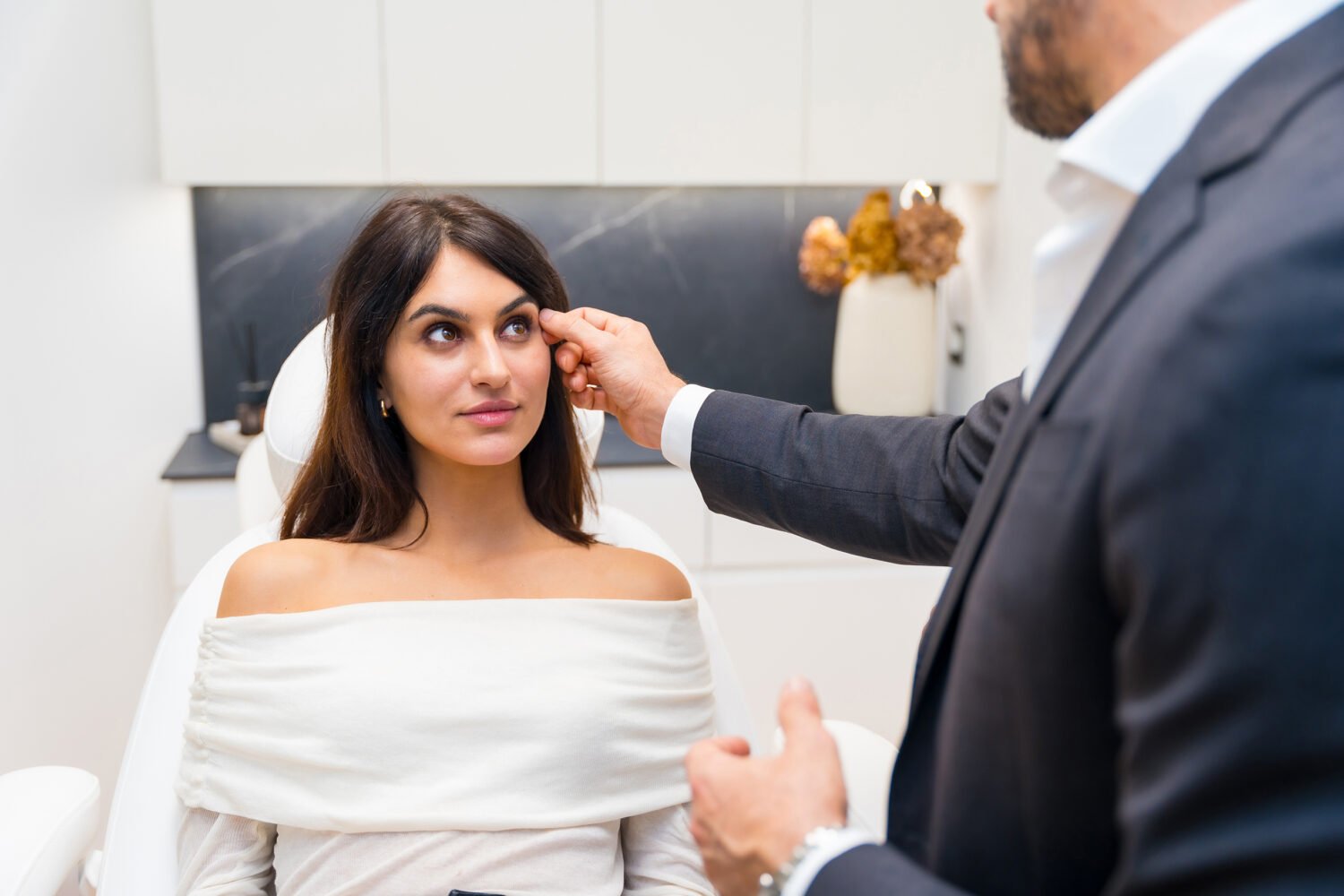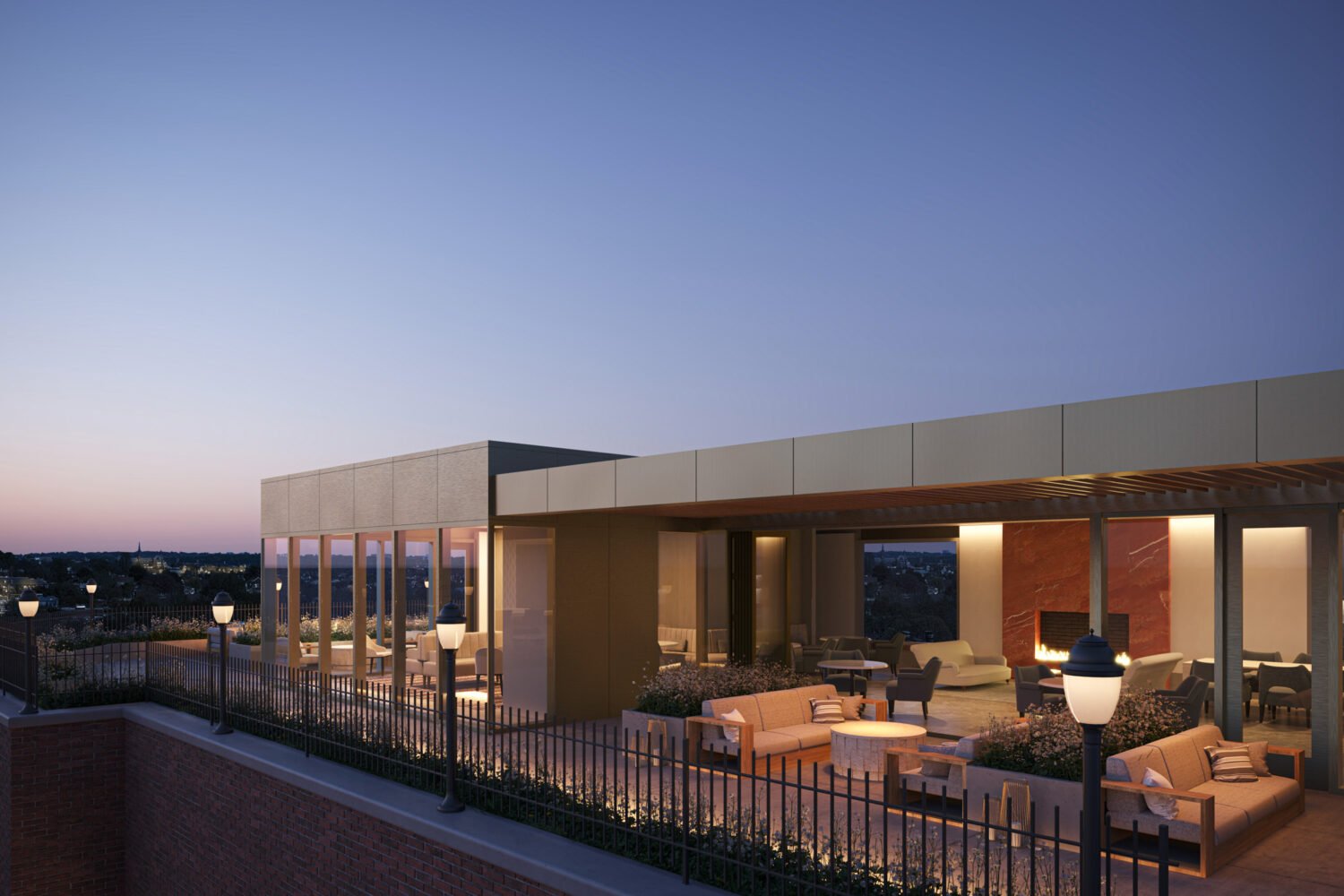Friday is National Bike to Work Day, during which local cycling groups across the country incentivize people to give bike commuting a try. In DC, Maryland, and Virginia, that means 100 “pit stops” with giveaways, food and drink, and t-shirts for the first 15,000 people who register.
The whole event is very exciting—unless, of course, you’re someone like me. An uncool confession: I’m often nervous to bike in the District.
To be clear, it’s not that I’ve never biked in the city. To the contrary, I use Capital Bikeshare pretty regularly. But every time I do, I feel like I’m risking my life—so I tend to avoid streets and instead stick to trails. Still, outside my apartment is an almost constant stream of cyclists going about their days without incident. I admire them, especially those who miraculously ride with children in tow, all while wearing office attire.
How can I—and others like me—reach that level of urban biking confidence? For insight, I got in touch with Renée Moore, the outreach director for the Washington Area Bicyclist Association (WABA). Surprisingly, Moore didn’t start biking until she was 25, and, like me, she at first stuck to the trails.
“I never considered biking in the streets,” Moore says. “I thought it was completely crazy. But then I saw that [a group called] Black Woman Bike DC was hosting a workshop on biking in the street, biking at night, and biking in cold weather.”
Moore tried the class and realized city biking wasn’t so bad, after all. In fact, she really liked it. Then, a few months later, the skill unexpectedly came in handy when her mother suffered a stroke. “I’d go to the hospital to visit her, but parking was $22,” Moore says. “I thought, ‘I’m not going to pay this everyday,’ so I started biking there. That’s when I started seeing the city in a way I hadn’t seen it before, even though I’m a native.”
Eventually, Moore started a group called Bicycling and the City, in which she introduced other women to urban biking by riding with them to events such as art exhibits, concerts, and movies. From there, she joined WABA as its director of Women and Bicycles Program, and then taught with Bike Maryland before returning to WABA. “It’s very much a part of my life now,” Moore says. “Especially in DC, I find it easier to get around by bike than to be in a car.”
In addition to the basics—such as wear your helmet, know your hand signals, and invest in a theft-proof bike lock—here are some of Moore’s top tips for biking in DC:
Remember that you belong
If you’re new to biking on the road, it can be easy to feel like you’re in the way of automobile traffic or are a hindrance to drivers—especially when there are no bike lanes. When feeling that way, Moore says, it’s important to always remember: “You belong on the road too.”
Try commuting on an upright bike, rather than a road bike
Moore enjoys riding road bikes recreationally, but for commuting, she prefers upright bikes. “I don’t like being in that hunched over position on the city streets,” she says. “I want to be able to sit up and look and see everything that’s going on.” Her advice? Figure out what you’re most comfortable on and “think about where you’re going to be riding. Do you like sitting up and being able to look around? Is the road going to be bumpy?”
Deck out your bike
If you already have reflective materials and lights on your bike—which are legally required when it’s dark out—but still feel nervous about whether car drivers can see you, you might try what Moore does: Decorate your bike.
“I have flowers all over my bike,” says Moore, who thinks that the flowers cause people to drive more slowly and carefully around her. “There’s something about it that signals ‘this is not a fast rider,’” she says. “Also, it’s just a lot of fun to ride a bike that’s decked out in this way.”
Plus, decorating your bike with flowers comes with an expected benefit. “No man wants to steal a flower bike,” she says. “I think it’s a [theft] deterrent.”
If there are no bike lanes, take the full lane
When there are no bike lanes, cyclists will often hug the side of the road, near the gutter. What you should do instead, says Moore, is take the full lane. “It’s safer for you and it’s actually safer for drivers too,” she says. “If you’re too close to the side, cars try to drive right past you in the same lane and that’s very scary.” Plus, she says, if a parked driver happens to swing open their door while you’re hugging the side of the road, you risk getting hit. “We call it the’ door zone,’ and it’s a really dangerous place to be,” she says.
Always scan ahead
Even if you avoid riding on the shoulder of the road, you may still encounter city bike lanes built on the left side of parked car lanes. Should you find yourself in one of these, Moore says, always scan ahead for cars with lights on—or for people sitting inside them. “That’s something to look for, being aware of whether a person might be pulling out,” she says.
Make eye contact with drivers
Before passing in front of a driver, make eye contact with them—yes, even if that means frustratingly waiting for them to look up from their phone when they’re at a stop sign (if you have a bell, you might ring it and grab their attention that way). “I want to see that they see me, so there isn’t any confusion when I move into the road,” Moore says. “Most of the time, I find that people are really friendly and will wave me through.”
The most direct route isn’t always the best route
“Sometimes Google will give you a good route and sometimes it’ll give you a route that isn’t the best,” Moore says. “There might be a better or more quiet street to ride, just a block over.” She says it’s often worth taking the slightly longer route to avoid the stress of riding on a street without bike lanes. Tip: when searching routes, make sure your Google map is set to the bike layer. Or, consult this city bike map.
Allow yourself more time than Google says you’ll need
If you’re in a hurry, it can be easy to ignore small habits that keep you safe. To avoid this, add ten or so minutes on top of whatever Google says you’ll need. The extra time will also allow you to enjoy the ride more. “I really want to enjoy the ride,” Moore says. “I love looking around and waving to people.”
You can follow the pedestrian walk signal even if the light is still red
The light is red, but the pedestrian walk signal is on—so what do you do as a biker? “In DC, you can go with the walk signal,” Moore says. “It’s called a leading pedestrian interval, and it gives bicyclists a little bit of a head start too.”
Avoid the “right hook”
One of the most common situations that causes bicycle crashes is when a car that is turning right doesn’t see a cyclist who is moving straight through an intersection. This is called the right hook, and it often happens when a cyclist rides past a line of cars waiting at a red light to get to the front—which is perfectly legal to do in DC. (In fact, many bicyclists prefer to do it, so they can take advantage of the leading pedestrian interval.) However, when doing this, just be sure to always check over your left shoulder, in case a car unexpectedly turns right on red.
Alternately, you might prefer to practice what Moore does—just wait in line. “I personally tend to stay in the order that everybody pulls up in,” she says. “A lot of cars don’t use their signals, and I don’t want to be next to them if they do something that is unexpected. It just feels safer.”
Yes, you can ride on sidewalks—but not downtown
Should you find yourself in a situation where there are no bike lanes and the traffic feels too dangerous to navigate, it’s fine to take the sidewalk for a bit—so long as you’re not in the central business district.
If you do take the sidewalk, remember that pedestrians always have right of way. Also, if the sidewalk is crowded, you’re probably better off walking your bike.
Practice riding with a friend
There’s strength in numbers, and oftentimes, it can help to ride with a friend—especially one who’s more experienced. “When you ride with someone else, you kind of get that feeling of, ‘Okay, this isn’t so bad,’ ” Moore says. If you’re in need of a bike buddy, Moore recommends seeking out local biking groups, or taking one of WABA’s city bicycling classes.
This story has been updated to correct Renée Moore’s job title. She is the outreach director for the Washington Area Bicyclist Association (WABA), not the outreach coordinator.

